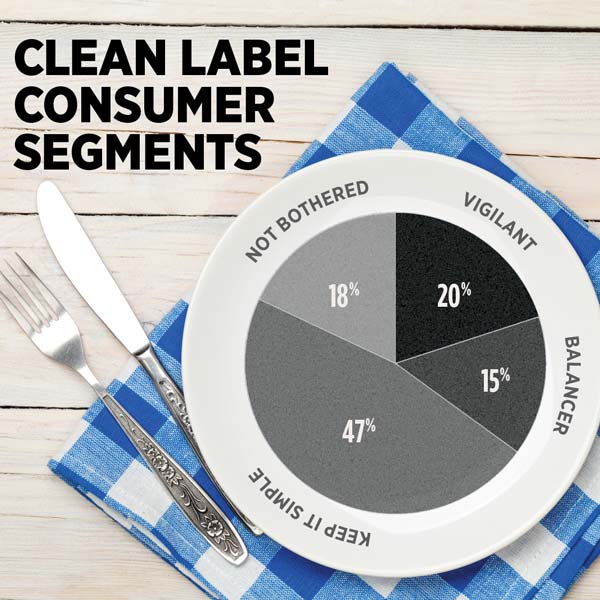
Clean Label Initiatives: Vigilant Consumers Approach to Clean Labels
Filed Under: Quantitative Research, Segmentation
As you may have noticed through various stories in the media, it’s become a pretty challenging environment for food manufacturers. Clean label trends that began a few years ago hit a fevered-pitch in 2015, with an abundance of headlines about this new evolution in retailing.
We might as well call this evolution a “revolution” – that has led to products like RxBar putting their short ingredient list on the FRONT of their package along with a provocative hint of sarcasm as they list “No B.S.” as the last ingredient. Those 4 letters speak volumes, not only as a promise that there is nothing fake in the product, but it serves as a swipe at big food companies and their tendency to produce processed and preserved foods.
But will all consumers be impressed in the same way by this new approach to food labeling that RxBar has displayed? C+R recently conducted research to better understand how consumers feel about this clean labeling revolution. This research suggests some consumers will love this slightly bombastic approach, while others will feel a bit skeptical, and some won’t even notice it. In our study, we asked consumers to rate their attitudes about food, nutrition and how they make their food choices across many different dimensions. We then statistically analyzed the results using Cluster Analysis to group consumers into segments. Among this national sample, we broke down consumers into four segments that we named:
- “Vigilant”: 20% of consumers
- “Balancer”: 15% of consumers
- “Keep it Simple”: 47% of consumers
- “Not Bothered”: 18% of consumers

In this rolling series of blog posts, we’ll expose the attitudes and behaviors of each of these groups, and how we recommend you target them if they are your brand’s target market. This post will focus on the “Vigilants” segment, who are the consumers we feel are to the far left on the clean label attitude spectrum. Companies seeking approval from the Vigilants need to walk a tight line but can be rewarded with loyal buyers ready to spread the word about your product integrity.
The first thing you need to know is that shopping and label reading are highly conscious acts for Vigilant consumers. They do not just breeze through the aisles, unless they are just picking up a few tried and true products that they already know they can trust. In fact, a Vigilant consumer really strives to reward products and brands that they know have given them “clean” products in the past and that they feel they can trust. But when they are in the store, looking at new food products to buy, seventy-two percent will walk away from a product they pick up at shelf if the label doesn’t telegraph health and goodness or, in other words, is not a ‘clean label’ in their eyes. And these individuals will see through a less than earnest attempt to clean up a product.
They are conscious about educating themselves regarding their food choices when out of the store as well. They often look for health information, specifically in regard to food and what different food companies are producing, and they take notice of products that meet their standards – minimal and high quality ingredients.
A high proportion of Vigilants fall into the Boomer generation. This is the case because they have time and reason to get informed and stay informed on the topic of clean labels. Food is an essential component of their health plan and Vigilant Boomers frequently need to manage physical ailments by keeping a close eye on what they put in their bodies. Due to the fact that food and health are inherently linked, food manufacturers who want to target these consumers need to back up the health claims they are making for their food products with clean labels.
With a Vigilant consumer, preservatives are bad-plain and simple. When discussing what they look for on food labels, Vigilant consumers are adamant that preservatives need to be removed or need to be absent in the first place in order for them to feel a label is “clean.” This group may is most likely already buying from brands that have steered clear of preservatives, so convincing them that you’ve removed all preservatives from your product may not win them over as quickly as you think. This means it is essential to keep working to build their trust, and leverage brands in your portfolio with the strongest health credibility first when you are attempting to overhaul and create ‘clean labels’ to bring this group to the table.
